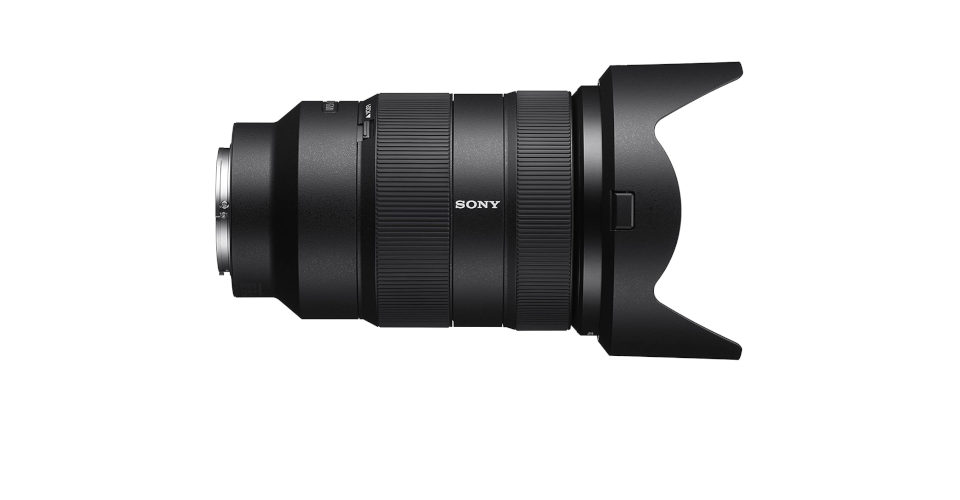6 Best Sony Full-Frame Lenses in 2020
Sony’s full-frame cameras are highly-regarded for their effective in-body image stabilization and fast autofocus performance. You’ll need special lenses to take full advantage of their large sensors, though, since combining them with APS-C lenses requires cropping or produces black edges.
Here are the six best Sony full-frame lenses you can buy today. All of them are first-rate, which is reflected in price and performance alike. We’ve included excellent all-rounders as well as lenses that perform exceptionally at more limited focal ranges. Our pics are sure to serve you well for decades, whether you’re looking for a single lens for your collection or starting from scratch.
| Budget |
|---|
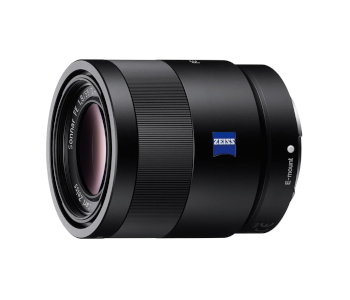 |
| Sony 55mm F1.8 Sonnar T FE ZA |
| 4.6/5.0 |
| Type: Standard prime |
| Angle of view: 43° |
| World-class sharpness for a standard prime. |
| Check Amazon |
| Best Value |
|---|
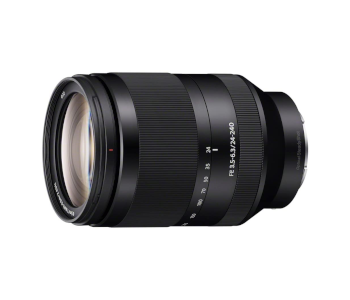 |
| Sony SEL24240 FE 24-240mm f/3.5-6.3 OSS |
| 4.6/5.0 |
| Type: Superzoom |
| Angle of view: 84° to 10° |
| Handles flaring and chromatic aberration well. |
| Check Amazon |
| Top Pick |
|---|
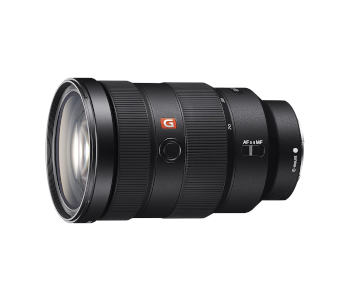 |
| Sony FE 24-70mm f/2.8 GM |
| 4.8/5.0 |
| Type: Standard zoom |
| Angle of view: 84° to 34° |
| Has a remarkably fast and silent autofocus. |
| Check Amazon |
Sony Full-Frame Lenses Comparison Table
| Image | Product | Overall Rating | Image quality | Build quality | Versatility | Price |
|---|---|---|---|---|---|---|
 | Sony FE 24-70mm f/2.8 GM | 4.8 | 4.9 | 4.7 | 4.8 | Check Price |
 | Sony SEL24240 FE 24-240mm f/3.5-6.3 OSS | 4.6 | 4.6 | 4.4 | 4.7 | Check Price |
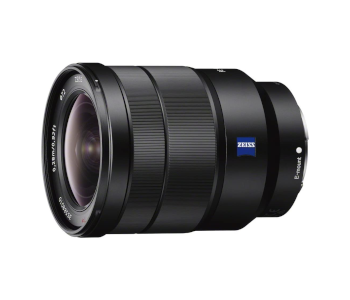 | Sony 16-35mm Vario-Tessar T FE F4 ZA OSS | 4.5 | 4.6 | 4.5 | 4.5 | Check Price |
 | Sony FE 70-200mm f/4 G OSS | 4.4 | 4.4 | 4.5 | 4.4 | Check Price |
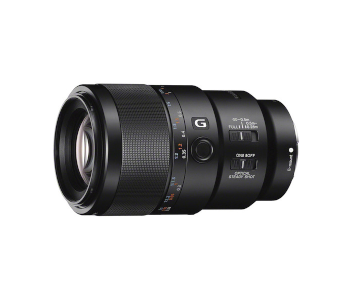 | Sony FE 90mm f/2.8 Macro G OSS | 4.4 | 4.6 | 4.3 | 4.3 | Check Price |
 | Sony 55mm F1.8 Sonnar T FE ZA | 4.6 | 4.7 | 4.4 | 4.5 | Check Price |
1. Best Overall – Sony FE 24-70mm f/2.8 GM
Editor’s Rating: 4.8/5
Sony’s premium standard zoom lens covers the sweet spot for all manner of professional photography. It’s wide enough at 24mm for breathtaking landscapes and can zoom to the short telephoto end for portrait or sports photos in an instant. It does all of this at a wide max aperture of f/.28, meaning it’s an excellent choice for event and wedding photography too. The FE 24-70mm f/2.8 GM is expensive, but every penny is justified given its superb optics.
Overview of Features
We’d expect nothing else than premium build quality from a lens like this, and the FE 24-70mm f/2.8 GM delivers. Its body is formed from durable polycarbonate and sealed off from dust and moisture. The outer glass is treated with Nano AR coating that significantly reduces glare, while a new XA element helps the lens form marvelous bokeh. You get a reversible petal-shaped hood as well that makes shooting in bright environments even more fun.
The lens’s physical controls are all smooth and respond instantaneously. Its zoom and focus rings are rubberized for extra grip, and there’s a lock that prevents the barrel from extending. It’s nice to have but will probably go unused since the lens doesn’t suffer from zoom creep. Other controls include the AF/MF switch and a button you can press in AF mode to focus manually.
Focusing is lightning-fast and nearly silent thanks to a Direct Drive SSM. The motor uses a piezoelectric element that pulsates thousands of times per second to correctly position the inner glass seemingly instantly. The autofocus works well in low light, and you’ll love it during video recordings of wedding vows and other momentous occasions since it isn’t distracting.
The FE 24-70mm f/2.8 GM is among the sharpest Sony lenses in existence. You wouldn’t think it at first glance since peripheral sharpness at f/2.8 is acceptable but unremarkable. Close the aperture to f/5.6-11, however, and you’ll witness tack-sharp images across the frame at any focal length.
The XA element mentioned earlier improves bokeh quality over similarly-priced competitors. It even allows for pleasant, small spheres of light to be visible at f/5.6 with the help of the aperture’s nine rounded blades. Blurry images look great in general, so the FE 24-70mm f/2.8 GM is a great choice regardless of the desired depth of field or focal length.
What We Didn’t Like
The FE 24-70mm f/2.8 GM has several flaws, all of which are easy to correct. Standard zooms are prone to distortion, and even one as well-built as this isn’t immune, especially to barrel distortion at the wide-angle end. There’s no image stabilization, but newer Sony full-frame camera bodies make this a non-issue. Vignetting is a more serious concern since it’s strong at 24mm and f/2.8. Changing either or both parameters goes a long way to reducing and eventually eliminating it.
| Tech Specs |
|---|
| Dimensions: 3.5 x 3.5 x 5.4 in. |
| Weight: 2 lbs. |
| Type: Standard zoom |
| Minimum focal length: 24mm |
| Maximum focal length: 70mm |
| Maximum aperture: f/2.8 |
| Minimum aperture: f/22 |
| Minimum focus distance: 1.3 ft. |
| Angle of view: 84° to 34° |
| Image stabilization: No |
| The Pros |
|---|
| Fantastic image clarity at most f-stops |
| Beautiful bokeh, even at f/5.6 |
| Remarkably fast and silent autofocus |
| Superior build quality |
| The Cons |
|---|
| Noticeable barrel and pincushion distortions |
| Strong vignetting at 24mm, f/2.8 |
2. Best Value – Sony SEL24240 FE 24-240mm f/3.5-6.3 OSS
Editor’s Rating: 4.6/5
Our overall winner is a fantastic zoom lens, but what if you need to get even closer to far-away subjects and want to do so for much less? The Sony SEL24240 FE 24-240mm f/3.5-6.3 OSS can zoom in 10x to bring pleasing photos of wildlife or far-away architecture, but it’s no slouch for portraits and group pictures either. The lens features fast autofocus, effective image stabilization, and a much more appealing price for its well-rounded abilities.
Overview of Features
The Sony SEL24240 FE 24-240mm f/3.5-6.3 OSS is a solidly-built, large lens that towers over Sony full-frame cameras when fully extended. The mount has a quality metal construction while the rest of the shell is made from weather-sealed plastic. The lens has no physical controls other than the focus and zoom rings, which are pleasant to turn. The zoom ring has clear white markings for several focal lengths.
You can look forward to clear and detailed images thanks to reliable autofocus and effective image stabilization. The AF motor keeps up well with moving subjects, and the lens doesn’t hunt regardless of light levels. Optical SteadyShot ensures that handheld images remain free from blur and corrects for three stops.
This lens’s optical properties are similar to our winner’s, albeit less refined. Expect a softer image periphery at either aperture extreme and more uniform, sharp results at mid-range f-stops. There are few issues with chromatic aberration. Flaring is controlled, especially once you attach the broad lens hood and add polarizers. A seven-bladed diaphragm is responsible for slightly geometric yet pleasing bokeh.
What’s Bad About It?
This is another lens that exhibits both kinds of barrel distortions. Shooting in JPEG will successfully resolve the problem, but you’ll have to resort to post-processing to correct RAW images. Two pounds is hefty for a lens without its own tripod mount. It also doesn’t balance well when fully extended.
| Tech Specs |
|---|
| Dimensions: 3.2 x 3.2 x 4.7 in. |
| Weight: 1.8 lbs. |
| Type: Superzoom |
| Minimum focal length: 24mm |
| Maximum focal length: 240mm |
| Maximum aperture: f/3.5 to f/6.3 |
| Minimum aperture: f/22 to f/40 |
| Minimum focus distance: 19.7 in. |
| Angle of view: 84° to 10° |
| Image stabilization: Yes |
| The Pros |
|---|
| Excellent value for the money |
| Quiet and accurate autofocus |
| Great image stabilization |
| Handles flaring and chromatic aberration well |
| Wide zoom range |
| The Cons |
|---|
| Heavy and unbalanced when extended |
| Pronounced barrel distortion |
3. Sony 16-35mm Vario-Tessar T FE F4 ZA OSS
Editor’s Rating: 4.5/5
A wide-angle zoom lens should be your second or third acquisition, depending on what type of photography interests you. Sony’s 16-35mm Vario-Tessar T FE F4 ZA OSS is the cream of the crop, offering fast and quiet autofocus, image stabilization, and superb flaring resistance at a moderate price. It’s the lens to get if you’re into landscapes, interiors, group events, or urban photography.
Overview of Features
We were surprised by how light the 16-35mm Vario-Tessar T FE F4 ZA OSS is. This is due to an all-metal, beautifully smooth matte-black body. No less important is its maximum aperture of f/4. While it’s a step lower than that of most wide-angle zoom lenses, it also reduces the number of required glass elements and the lens’s overall weight. The zoom and focus rings turn smoothly and have just the right amount of resistance. They’re the only physical controls as you switch from automatic to manual focus via your camera.
This lens has one of the fastest and quietest autofocus systems we’ve encountered. A linear motor drives the AF system with speed and precision. You’ll have a hard time hearing it in a quiet room unless you place your ear close to the lens. Filmmakers will have a field day using this lens for establishing or group shots. Optical SteadyShot is also on the menu. While uncommon for wide-angle lenses, it introduces three stops of image stabilization that help you take better pictures without relying on a tripod. Alternatively, you can step up the speed and capture dynamic images with less blur.
Excellent sharpness and flaring resistance are the 16-35mm Vario-Tessar T FE F4 ZA OSS’s stand-out features. You’ll find it produces razor-sharp images from the get-go throughout its focal range and aperture sizes, with one notable exception. The high-quality coatings and glass elements that make the lens up significantly reduce flaring, while the lens hood gets rid of it altogether. Expect breathtaking landscape shots with a prominent sun stars and rich contrast.
Bokeh and chromatic aberration are a mixed bag. The former is pleasing under the right circumstances, but the insides of the circles aren’t smooth. The latter is prominent at 16mm but can be successfully corrected in-camera or in post.
Are There Drawbacks?
You should avoid setting the 16-35mm Vario-Tessar T FE F4 ZA OSS to 35mm at its max aperture. These settings lead to soft and blurry corners that are also heavily darkened due to vignetting. Decreasing the f-stop to f/5.6 brightens things up, but corner sharpness at 35mm doesn’t improve much regardless of aperture.
| Tech Specs |
|---|
| Dimensions: 3.1 x 3.1 x 3.9 in. |
| Weight: 18.7 oz. |
| Type: Wide-angle zoom |
| Minimum focal length: 16mm |
| Maximum focal length: 35mm |
| Maximum aperture: f/4 |
| Minimum aperture: f/22 |
| Minimum focus distance: 11 in. |
| Angle of view: 107° to 63° |
| Image stabilization: Yes |
| The Pros |
|---|
| Light, all-metal build with smooth controls |
| Excellent overall sharpness |
| Handles flaring very well |
| Outstanding autofocus and image stabilization |
| The Cons |
|---|
| Using the lens at 35mm and f/4 leads to severe vignetting and edge softness |
4. Sony FE 70-200mm f/4 G OSS
Editor’s Rating: 4.4/5
Sony’s versatile telephoto lens picks up where our winner left off, offering superb performance for wildlife and sports photography. We were tempted to recommend the Sony FE 70-200mm f/2.8 GM OSS because of its wider aperture instead, but the f/4 variant is both considerably lighter and cheaper without significant quality loss. It’s sharp, responsive, and the perfect tool to have if you frequently switch from portraits to sports photography.
Overview of Features
Sony designed the FE 70-200mm f/4 G OSS with their Alpha-series full-frame cameras in mind. Its balance is superb despite its formidable dimensions, especially once you attach the tripod mount. The mount lets you seamlessly switch from landscape to portrait mode and shifts the balance point forward for maximum stability. The lens’s control scheme is impressive, too. It consists of three buttons that hold AF, focus limiter and AF/MF switches, and a pair of toggles that adjust the OSS.
The FE 70-200mm f/4 G OSS uses a similar, dual-linear autofocus motor and OSS for smooth, silent shooting. The speed of the autofocus will depend on your camera, and you’ll get the best results with the a7R III. However, the lens doesn’t hunt much whether it’s on a full-frame or APS-C body unless the lighting is poor.
We were delighted with the lens’s sharpness, especially since it persists throughout the focal range and aperture. It’s uncommon to see a telephoto lens that holds its own at f/22 and can create a shallow depth of field without the image becoming soft even when zoomed in completely. Its array of glass features 15 groups and 21 elements, 5 of which are dedicated to flare suppression.
There’s negligible barrel and pincushion distortion at 70 and 200mm, respectively. You won’t need to correct either unless you’re shooting shapes with many straight lines. The lens can produce bokeh on apertures as narrow as f/8. The nine-bladed diaphragm creates rounded and soft circles with clear transitions whose appearance is pleasing to the eye.
What We Didn’t Like
The FE 70-200mm f/4 G OSS has barely any faults. There’s pronounced lateral chromatic aberration that spans two pixels at either focal length extreme. However, adjusting the focal length even slightly improves the quality drastically. Make sure there’s ample light while using this lens as its autofocus slows down in the dark.
| Tech Specs |
|---|
| Dimensions: 3.2 x 3.2 x 6.9 in. |
| Weight: 1.9 lbs. |
| Type: Telephoto zoom |
| Minimum focal length: 70mm |
| Maximum focal length: 200mm |
| Maximum aperture: f/4 |
| Minimum aperture: f/22 |
| Minimum focus distance: 3.4 ft. |
| Angle of view: 34° to 12° |
| Image stabilization: Yes |
| The Pros |
|---|
| Excellent build quality and physical controls |
| Remarkably sharp at any setting |
| Little distortion and flaring |
| Makes beautiful bokeh |
| The Cons |
|---|
| Slow autofocus in low light |
| Noticeable chromatic aberration at focal length ends |
5. Sony FE 90mm f/2.8 Macro G OSS
Editor’s Rating: 4.4/5
Sony makes some of the most versatile macro lenses around, and the FE 90mm f/2.8 Macro G OSS is the cream of the crop. It delivers 1:1 magnification at 11 inches, so even tiny subjects like insects or jewels will appear in glorious detail. However, the lens also excels at portraiture and product photography due to its high max aperture and ability to contrast crystal-clear subjects with creamy backgrounds. While it’s more niche than most of our picks, this macro lens is a must-have for any photographer.
Overview of Features
This is another lens with evenly-balanced optical and physical properties. On the one hand, you’ve got a fast aperture of f/2.8 ideal for low-light photography and medium to high shutter speeds. On the other, it’s neither too bulky nor too heavy. The outer shell is made from quality plastic while the mount is metal. There’s no gasket on the mount, but Sony says its macro lens resists moisture and dust buildup nevertheless.
While the FE 90mm f/2.8 Macro G OSS’s autofocus is dependable, manual focusing has its benefits. The focus ring has two positions, automatic and manual. Placing it in automatic mode enables manual focusing from your camera’s menu as well as focus locking. Sliding the ring backward engages electronic manual focusing and lets you specify the distance as shown on a separately-rotating ring. The best part is that you can set a distance on the second ring beforehand and quickly toggle to it from autofocus. A focus hold button and a switch with three focus limit settings allow for even more precise adjustment.
All of Sony’s FE lenses have proven to be sharp, and the FE 90mm f/2.8 Macro G OSS follows this trend. It exhibits corner softness at f/.28, but that’s to be expected and isn’t a major fault considering the kind of subjects you’ll be photographing. Lateral color fringing is absent, but the circular variant is present at higher f-stops. The barrel distortion is minimal, as is flaring.
What’s Bad About It?
The autofocus is slow and hunts even in daylight. Switching to manual helps, but the lens’s advanced digital manual focusing takes practice to master.
| Tech Specs |
|---|
| Dimensions: 3.1 x 3.1 x 5.1 in. |
| Weight: 1.3 lbs. |
| Type: Macro lens |
| Focal length: 90mm |
| Maximum aperture: f/2.8 |
| Minimum aperture: f/22 |
| Minimum focus distance: 11 in. |
| Angle of view: 27° |
| Image stabilization: Yes |
| The Pros |
|---|
| Excellent sharpness |
| Performs exceptionally well as a macro and portraiture lens |
| Advanced manual focus |
| Great optical properties, save for occasional color fringing |
| The Cons |
|---|
| Slow autofocus |
| Innovative manual focus isn’t for everyone |
6. Best Budget Option – Sony 55mm F1.8 Sonnar T FE ZA
Editor’s Rating: 4.6/5
The 55mm F1.8 Sonnar T FE ZA is Sony’s first FE standard prime and remains king when it comes to price and performance. Its ubiquitous focal length and portability make this the ideal lens for travel photographers who need to capture sunsets, architecture, and people with equally impressive results. It’s among the sharpest primes in existence and effortless to use. If you’ve got the money to spend on a single premium Sony full-frame lens, this is it.
Overview of Features
The Zeiss logo is synonymous with top quality, and the 55mm F1.8 Sonnar T FE ZA is no exception. It is exceptionally well-engineered since a wide max aperture of 1.8 doesn’t come at the cost of weight. The lens is small and compact due to only seven glass elements in five groups. Its outward appearance is Spartan and robust; there are no buttons or switches, only the broad and grippy focus ring. It’s dampened so that you can quickly focus from 11 inches to infinity or do so gradually with precision.
Autofocus performance is generally good, with a few minor quibbles. Its speed is acceptable in single-shot mode and ramps up considerably when shooting continuously. Accuracy for stationary subjects is superb and better than average if they’re moving thanks to Sony’s face- and eye-tracking. The 55mm lens doesn’t have OSS, but your camera’s IBIS makes it redundant anyway if you’re shooting with a tripod.
Consistent and impressive sharpness is the best thing about this lens. You can snap pictures at f/1.8 and don’t have to frame them to distract the viewer from soft corners as peripheral sharpness is better than expected. It sees a large increase at f/2 and remains stellar until f/8.
There’s no distortion to speak of, and you’d have to intentionally point straight at the sun during golden hour to provoke minor flaring. Bokeh looks nice, but the rings are onion-shaped due to all the glare-reducing aspherical elements in the lens’s construction.
Are There Drawbacks?
The 55mm F1.8 Sonnar T FE ZA has a luxurious metal body and is a pleasure to handle. However, the shell is smooth and slippery, so you’ll want to take care when attaching the lens. There’s strong vignetting at f/1.8, but it goes away once you step the aperture down.
| Tech Specs |
|---|
| Dimensions: 2.5 x 2.5 x 2.8 in. |
| Weight: 9.9 oz. |
| Type: Standard prime |
| Focal length: 55mm |
| Maximum aperture: f/1.8 |
| Minimum aperture: f/22 |
| Minimum focus distance: 1.6 ft. |
| Angle of view: 43° |
| Image stabilization: No |
| The Pros |
|---|
| World-class sharpness for a standard prime |
| Well built and operates smoothly |
| Can be used in direct sunlight |
| No distortion |
| The Cons |
|---|
| Smooth shell makes the lens slippery |
| Strong vignetting at f/1.8 |
Contents
- Sony Full-Frame Lenses Comparison Table
- 1. Best Overall – Sony FE 24-70mm f/2.8 GM
- Overview of Features
- What We Didn’t Like
- 2. Best Value – Sony SEL24240 FE 24-240mm f/3.5-6.3 OSS
- Overview of Features
- What’s Bad About It?
- 3. Sony 16-35mm Vario-Tessar T FE F4 ZA OSS
- Overview of Features
- Are There Drawbacks?
- 4. Sony FE 70-200mm f/4 G OSS
- Overview of Features
- What We Didn’t Like
- 5. Sony FE 90mm f/2.8 Macro G OSS
- Overview of Features
- What’s Bad About It?
- 6. Best Budget Option – Sony 55mm F1.8 Sonnar T FE ZA
- Overview of Features
- Are There Drawbacks?

